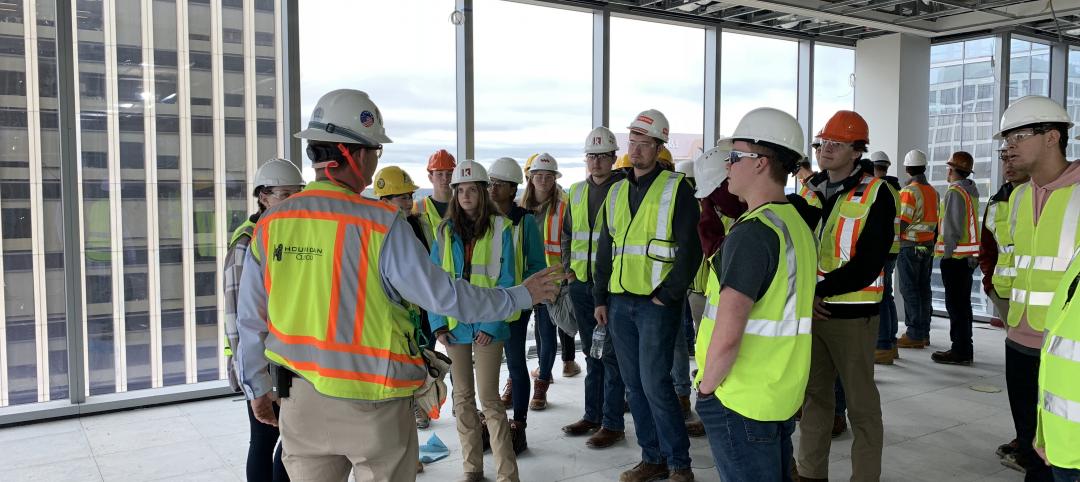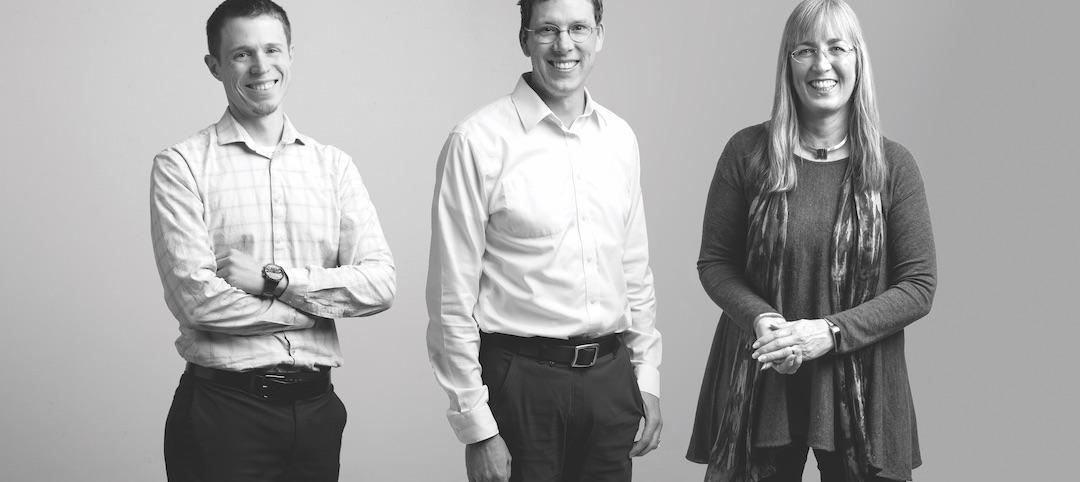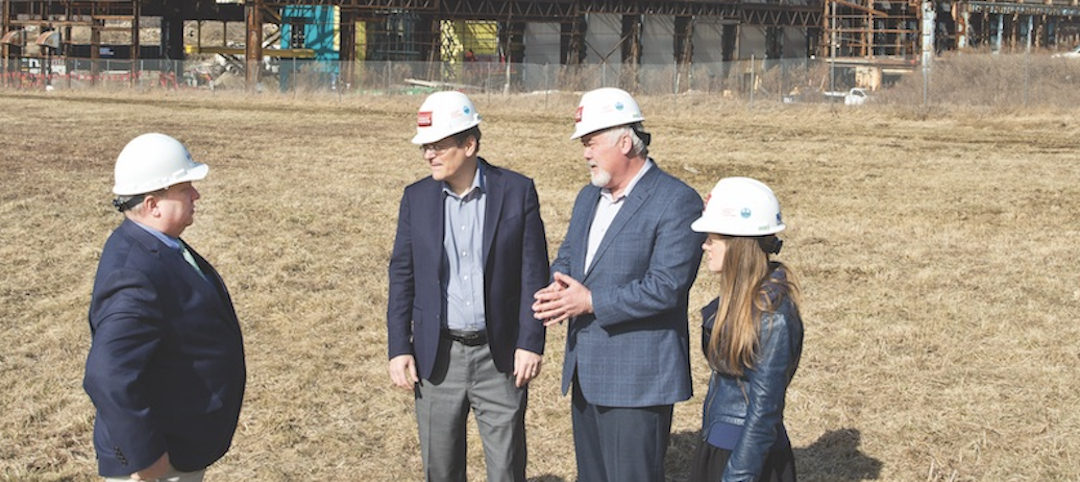Jerry Yudelson is on a mission. He wants to get architects, engineers, contractors, and property owners talking—really talking—about the future of green building. “There’s been no serious intellectual discussion about whether we’re going in the right direction,” says the licensed engineer and author of 13 books on green building. “We’re just tinkering with the system.”
The system in question is the LEED rating program and its less recognized cousins, Green Globes and the Living Building Challenge. Yudelson’s new book, Reinventing Green Building: Why Certification Systems Aren’t Working and What We Can Do About It (New Society Publishers), paints LEED as massively ineffective: not even one percent of nonresidential buildings (less than four percent by area) has earned LEED certification, despite the U.S. Green Building Council’s stated goal of 25% of buildings earning a LEED plaque. That, in Yudelson’s view, can hardly be deemed “market transformation.”
BD+C MOVERS AND SHAPERS
The People, Institutions, and Movements that are influencing design and construction in the U.S. and around the world.
Dan Gilbert – Detroit's Catalytic Converter
Judith Rodin – Crusader for Resiliency
Bruce Katz – Urban Evangelist
Millennials – The Disruptors
Alloy LLC – Vertical Integrator
Jerry Yudelson – Green Giant
The PANAMAX Effect – The New Panama Canal
Theaster Gates – Real Estate Artist
Yudelson’s eco-roots go back to 1970 and his time as a student organizer at Caltech for the first Earth Day. He has devoted much of the last two decades in the service of the USGBC. He chaired the Greenbuild steering committee for six years and is credited with training thousands of AEC professionals for the LEED accreditation exam. He was named to the first class of LEED Fellows. More recently, he was president of the rival Green Building Initiative; he resigned after 15 months over a “difference in direction” with the GBI board.
In Reinventing Green Building, Yudelson meticulously documents the failure of current green building rating systems to address what he calls the “Big Three” factors related to climate change: energy use/carbon emissions, water use, and waste recycling.
To be successful, he says, any future rating system must meet building owners’ needs for sustainable operations, not just what environmentalists want. It must deliver appreciable benefits in a cost-effective manner. Such a rating system would have to be user-friendly, deliver results quickly and fairly, and be scaled for rapid uptake—covering 25% of U.S. building area in 10 years.
FIVE WAYS TO ADDRESS GREEN RATINGS PROGRAMS
Yudelson offers five scenarios for future rating programs. The first would see LEEDv4 and other rating systems slogging along in a business-as-usual mode, barely generating any measurable gains (except possibly for LEED Multifamily).
5 GREEN BUILDING SCENARIOS
• Business as usual
• Reform the delivery model
• Internet 3.0 – Greater user experience
• Net-zero energy
• Continuous improvement
The second would create a mélange of LEED and BREEAM, the British rating model. Yudelson thinks a simplified, 100-point system with only five credits could work nicely for portfolios of existing buildings—convenience stores, restaurant chains, hotels, schools, etc.
The third scenario, “Internet 3.0,” would call for greater end-user contribution to the development of the rating model. This model would empower building occupants and visitors to use their smartphones to assess and report on how well individual buildings are tackling not only the Big Three factors but also key performance indicators—user comfort, air flow, lighting, etc. He advocates for AIA contract documents to include a requirement for post-occupancy evaluations, to gather better data on building performance and remediate any shortcomings.
Net-zero carbon, the fourth scenario, would put all its eggs into reducing buildings’ carbon impact. Yudelson sees the Association of College and University Presidents’ Climate Commitment as the kind of prime mover that could make this happen.
THE 3 S’S OF A SUCCESSFUL GREEN RATING SYSTEM
Smart – incorporating new technologies for building design and operations
Simple – easily implemented by building operations personnel
Sustainable – focus on reducing energy/carbon, water use, and waste
The last, and simplest, option would be to encourage large organizations like the U.S. military, retail shopping center developers, and the GSA to engage in continuous improvement on energy, water, and waste. President Obama’s 2015 executive order already requires federal agencies to meet such a mandate, but it needs a more effective implementation platform, according to Yudelson.
Yudelson hardly claims to have all the answers. He just wants to go beyond reliance on LEED and other building rating systems to attack climate change. “It’s time to remove the barriers to innovation,” says Yudelson.
He wants architects, engineers, and other building professionals to use their creative skills to find a new path to addressing energy use, water use, and waste reduction in the built environment. “It’s a tremendously exciting time to be involved in buildings, because we now know what to do,” says Yudelson. “It’s a question of applying what we know and being open to new ideas.”
Related Stories
Women in Design+Construction | Jan 25, 2024
40 Under 40 Class of 2023 winner Kimberly Dowdell inaugurated as AIA 2024 President
The American Institute of Architects (AIA) has announced the inauguration of Kimberly Dowdell, AIA, NOMAC, NCARB, LEED AP BD+C, Principal and Director of Strategic Relationships at HOK and BD+C 40 Under 40 superstar, as its 100th president.
AEC Innovators | Mar 3, 2023
Meet BD+C's 2023 AEC Innovators
More than ever, AEC firms and their suppliers are wedding innovation with corporate responsibility. How they are addressing climate change usually gets the headlines. But as the following articles in our AEC Innovators package chronicle, companies are attempting to make an impact as well on the integrity of their supply chains, the reduction of construction waste, and answering calls for more affordable housing and homeless shelters. As often as not, these companies are partnering with municipalities and nonprofit interest groups to help guide their production.
AEC Innovators | Feb 28, 2023
Meet the 'urban miner' who is rethinking how we deconstruct and reuse buildings
New Horizon Urban Mining, a demolition firm in the Netherlands, has hitched its business model to construction materials recycling. It's plan: deconstruct buildings and infrastructure and sell the building products for reuse in new construction. New Horizon and its Founder Michel Baars have been named 2023 AEC Innovators by Building Design+Construction editors.
40 Under 40 | Oct 19, 2022
Meet the 40 Under 40 class of 2022
Each year, the editors of Building Design+Construction honor 40 architects engineers, contractors, and real estate developers as BD+C 40 Under 40 awards winners. These AEC professionals are recognized for their career achievements, passion for the AEC profession, involvement with AEC industry organizations, and service to their communities.
Movers+Shapers | Nov 7, 2021
Passage of $1.2 trillion infrastructure bill expected to spur stronger construction activity
AEC firms see federal investment as historic
Movers+Shapers | Apr 30, 2020
College programs help prepare students for careers in the construction industry
Universities with AEC programs hone their curricula and research to prepare students to hit the ground running in the construction industry.
Movers+Shapers | Apr 21, 2020
Management Training: AEC firms bring students into the real world
Students benefit substantively from internships offered by AEC firms.
Movers+Shapers | Apr 17, 2020
Meet the ‘AEC outsiders’ who are helping to push the industry into the new decade
AEC professionals have enough on their plates without becoming specialists in a new skill outside of their wheelhouse.
Movers+Shapers | Apr 15, 2020
Buildings as "open source platforms"
NBBJ’s year-old Design Performance Group helps building teams make smarter choices earlier.
Movers+Shapers | Apr 23, 2019
Steely resolve: Carnegie Mellon University fuels Pittsburgh's post-industrial reinvention
After the steel industry started collapsing in the late 1970s, Pittsburgh has been reinventing itself as a science, medical, and academic hub.

















